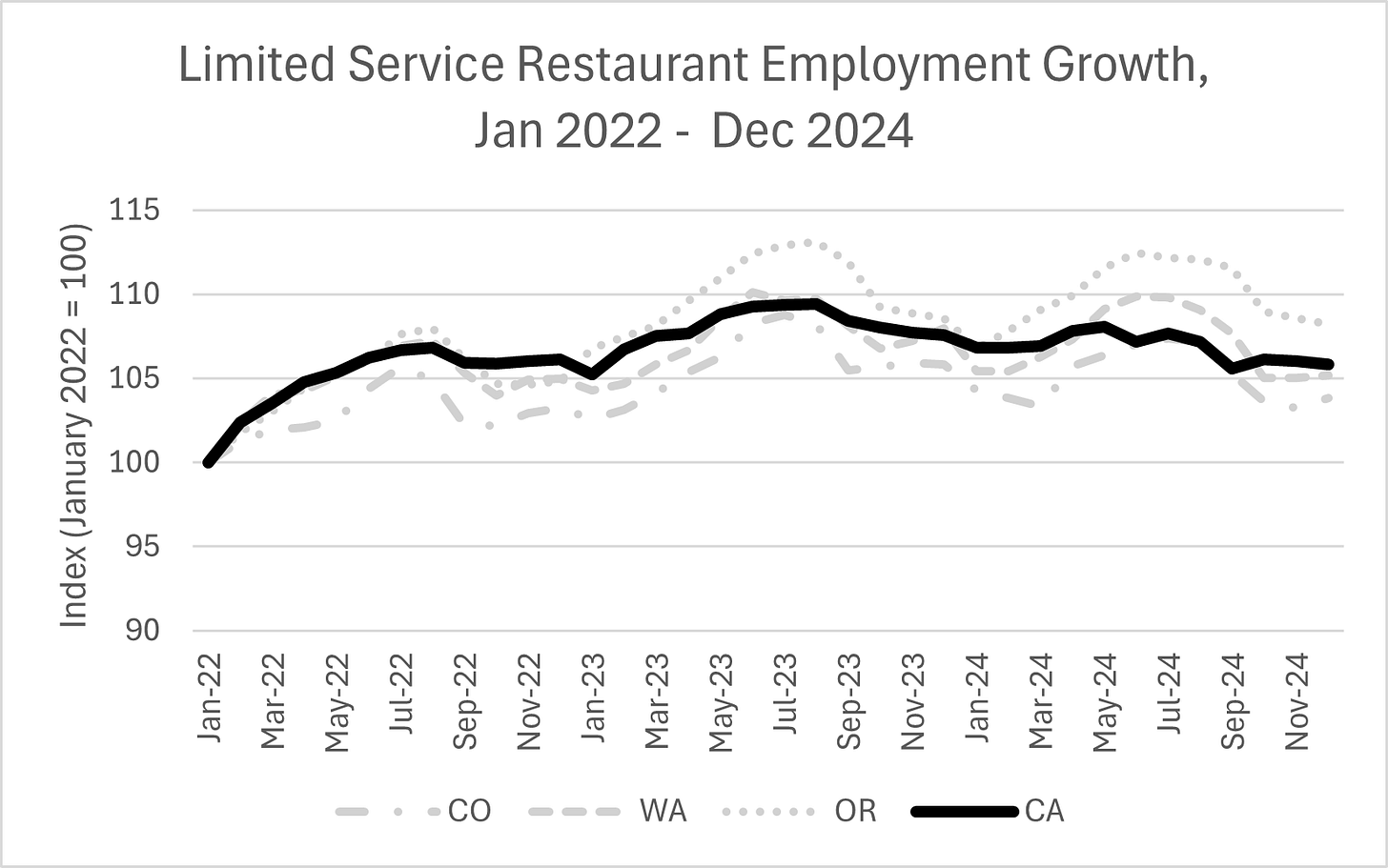Update to Beacon Economics/Dr. Christopher Thornberg/Fast Act analysis
The Q4-2024 data arrived a few weeks ago and still don't show a negative impact
On June 4 we received the Quarterly Census of Employment and Wages update (QCEW) for Q4-2024; this allows me to extend my response to Dr. Thornberg’s report on the effects of the Fast Act by another 3 months. See my previous discussion of the data and Dr. Thornberg’s argument here, and note that these incorrect figures are still being pushed by his organization. For example, I recently saw his research manager claim the Fast Act caused something like a 24,000 job loss in the state - which, again, is a dishonest representation of research that had no causal inference.
I will cut right to the conclusion: the latest data update from the QCEW does not provide any more merit to Dr. Thornberg’s conclusions from his “jumping the gun” report.
To Make a Causal Claim, You Need Proper Comparison Points
Why? Because the data still show that while there has been some slowdown in Limited-Service restaurant jobs in California, when one compares performance of the Limited Service restaurant sector in two different ways, there is little evidence of a Fast Act effect:
Compared to nearby states (because Dr. Thornberg’s “Balance of States” comparison includes many states that are unlike California), California’s limited service job growth has not suffered a major decline and has fared better than both Colorado and (now, with the Q4 2024 update) Washington
Full-Service restaurant jobs in California have followed the same trajectory as Limited-Service restaurant jobs, even after the Fast Act (April 2024) should have caused a divergence, since the Fast Act raised minimum wages only for restaurants that are part of larger national chains. To wit: whatever problems California’s restaurant sector is currently experiencing, it has nothing specifically to do with the Fast Act – what we would call “secular trends” are affecting many California restaurants and have nothing to do with the Fast Act
Compared to Other Nearby States that Don't Have a Tip Credit, and Compared to Full Service Restaurants, the Fast Act Did Not Cause Job Loss
Figure 1: Focus on the last two data points. The dark black line shows that employment levels in California have trended downward, but did not suffer the same drop through the rest of the year compared to the other states. Also noticed how no state had higher employment in this sector at the end of 2024 than they did a year or two earlier.
Figure 2: notice how closely Limited and Full Service restaurant employment have “tracked” each other since 2013, even before the Fast Act was passed. But the Fast Act - if it really was as significant as Dr. Thornberg claimed - should have affected Limited Service restaurant employment much more significantly, since it only raised labor costs for establishments that are part of large national fast food chains.
Number of Fast Food Establishments Continues to Grow
Additionally, California’s Limited-Service restaurant establishment counts continue to grow during the time the Fast Act has been in effect. In fact, since mid-2024, their growth has been better than any nearby state used for comparison: Oregon, Washington, and Colorado.
Even Dr. Thornberg himself has conceded that his analysis could not be used to make causal claims; I believe at this point the jobs argument should now rest.





